EVOLUTION
The Mediterranean sea is not only a favourable environment for marine mammals but is also a region where they have been present since ancient time, as fossil evidence in Egypt show. Most palaeontologists agree on dating the beginning of their evolution in the Eurasian area around 65 million years ago. The ancestors of dolphins and whales were probably carnivorous ungulates (Mesonychidae) dating back to the Eocene; they fed on fish and became increasingly aquatic over time.
TWO SUB-ORDERS OF CETACEANS
Cetaceans are divided into two sub-orders: mysticetes and odontocetes. Mysticetes are characterised by the absence of teeth, which are replaced by horny plates called “baleen” with wich the animals filter water withholding food. Odontocetes, on the other hand, possess conical teeth typical for carnivores.
FIN WHALE
Scientific Name: Balaenoptera physalus (Linnaeus, 1758)
Length: 19/22m. Newborns are 6m long
Weight: 60/70t. Newborns weigh 2 tonnes
Average life span: 80 years
Diving time: 6/7 min on average. Maximum dive 20 min.
This whale is the second largest animal on the planet after the blue whale (Balaenoptera musculus). It’s the only regular baleen whale in the Mediterranean.
It is estimated that the Mediterranean subpopulation counts around 1,700 individuals (a few hundred of which live in the Pelagos Sanctuary) and is subjected to a continuing decline. According to the IUCN Red List classification, this subpopulation is Endangered and the population trend is decreasing.
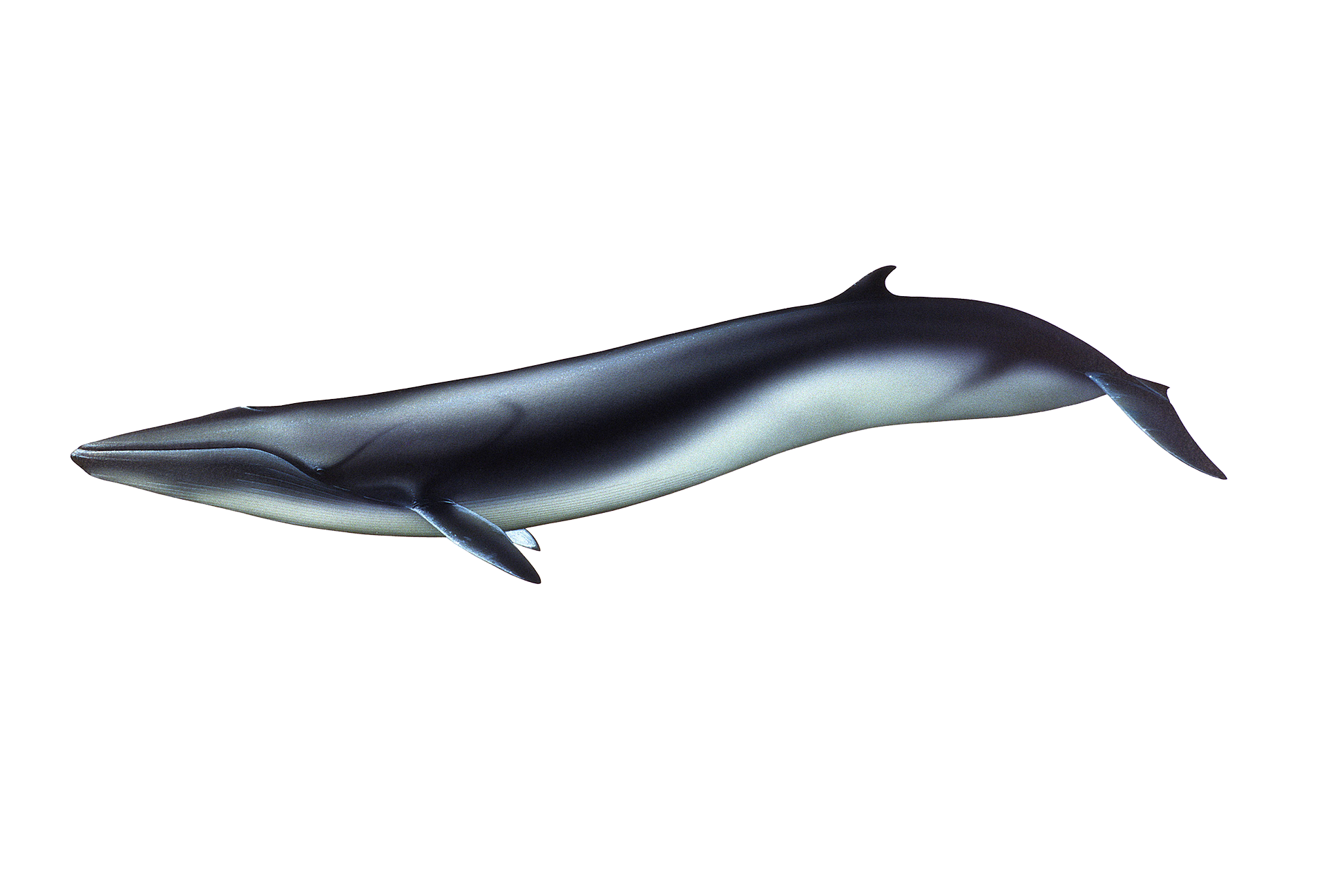
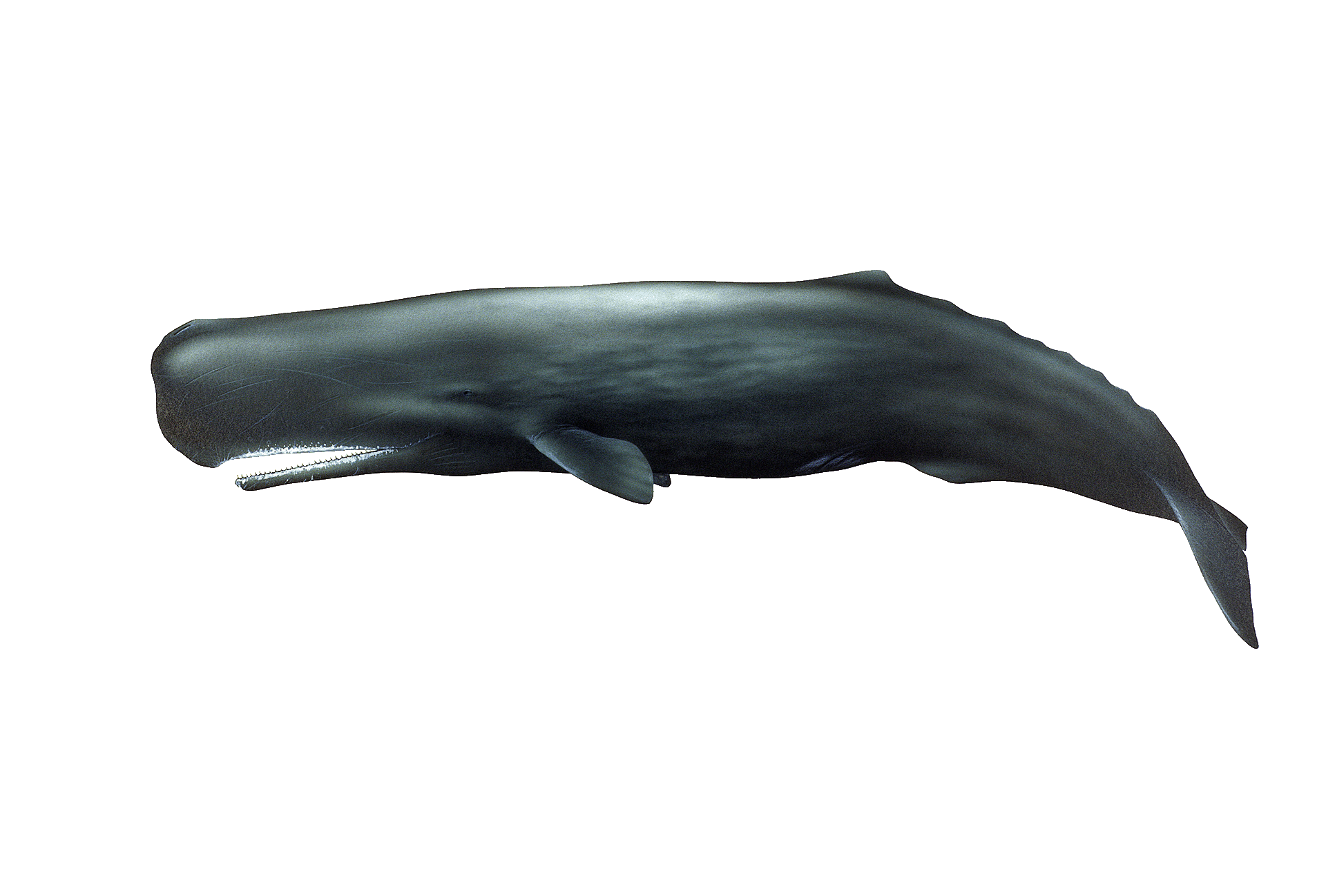
SPERM WHALE
Scientific name: Physeter macrocephalus (Linnaeus, 1758)
Length: males 18 m, females 11 m
Weight: 18 t
Average life span: 80 years
Diving depth: 2.000 m
The Sperm whale is the largest of the odontocetes (cetaceans with teeth), with a very big head that takes up 1/3 of the total body. Sperm whales live along the continental slope, alone or in small groups. It has surprising diving skills allowing it to remain underwater for over an hour and reach depths of 2,000 m.
These remarkable abilities allow the Sperm whale to reach into the abysses where it catches giant squids and large fish. In the Pelagos Sanctuary males are sighted usually alone and females and newborns are only rarely found. According to the IUCN Red List classification, the species is Endangered and the population trend is decreasing.
CUVIER’S BEAKED WHALE
Scientific name: Ziphius cavirostris (G. Cuvier, 1823)
Length: 5-7 m
Weight: 2-2.5 t
Average life span: estimated 35 years
Diving depth: 3000 m for over 2 hours (in the Pelagos Sanctuary, 1070 m for max 1 hour)
The most distinctive feature of the Cuvier’s beacked whale is the elongated lower jaw which, in the adult male, bears two large teeth at the end. It lives offshore, with a preference for areas around submarine canyons. Solitary, this animal is sometimes encountered in small groups. The species is regular in the Mediterranean sea but, due to its shy behaviour, sightings are difficult. This marine mammal feeds on cephalopods. According to the IUCN Red List classification, the Mediterranean subpopulation is Vulnerable and the population trend is decreasing.
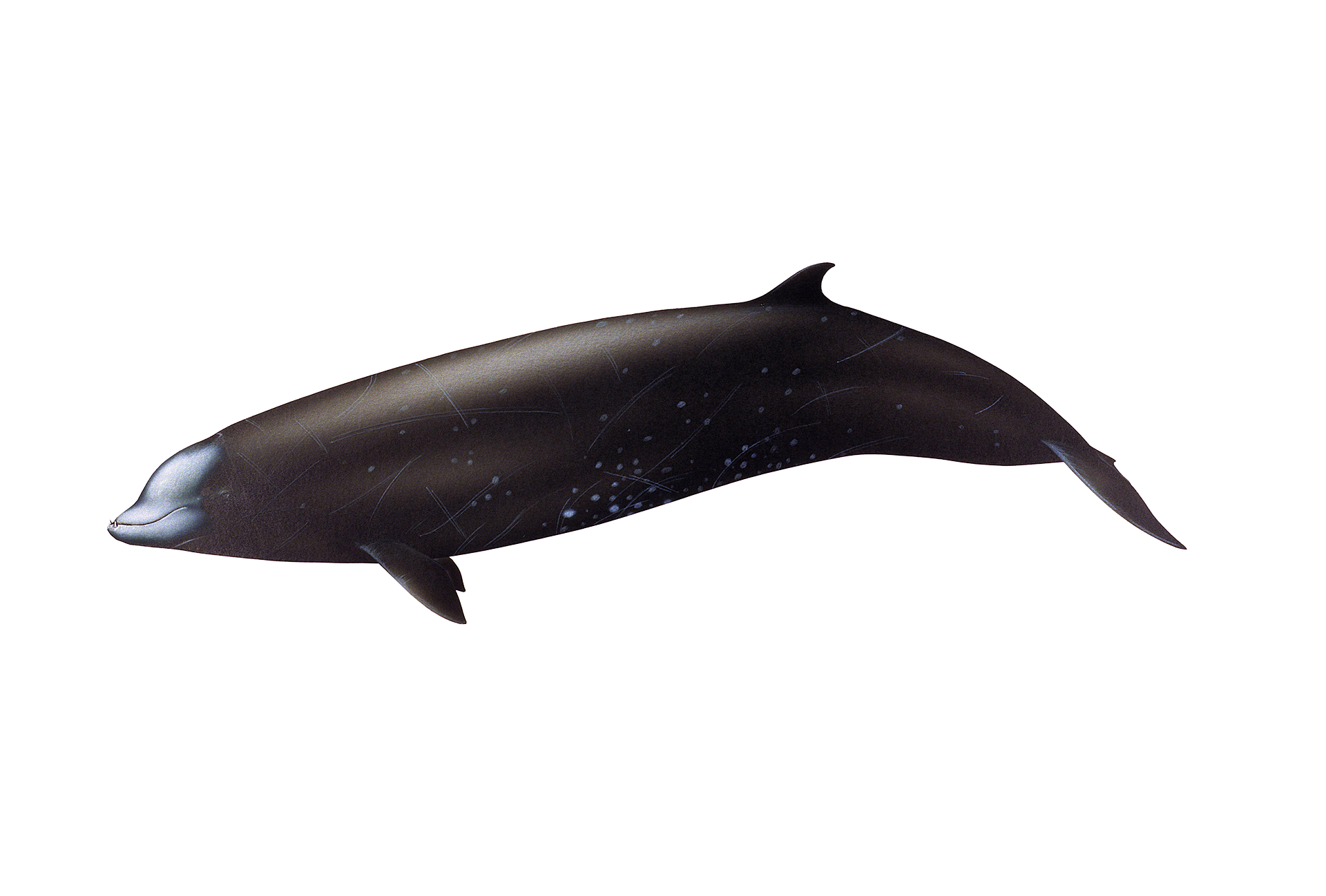
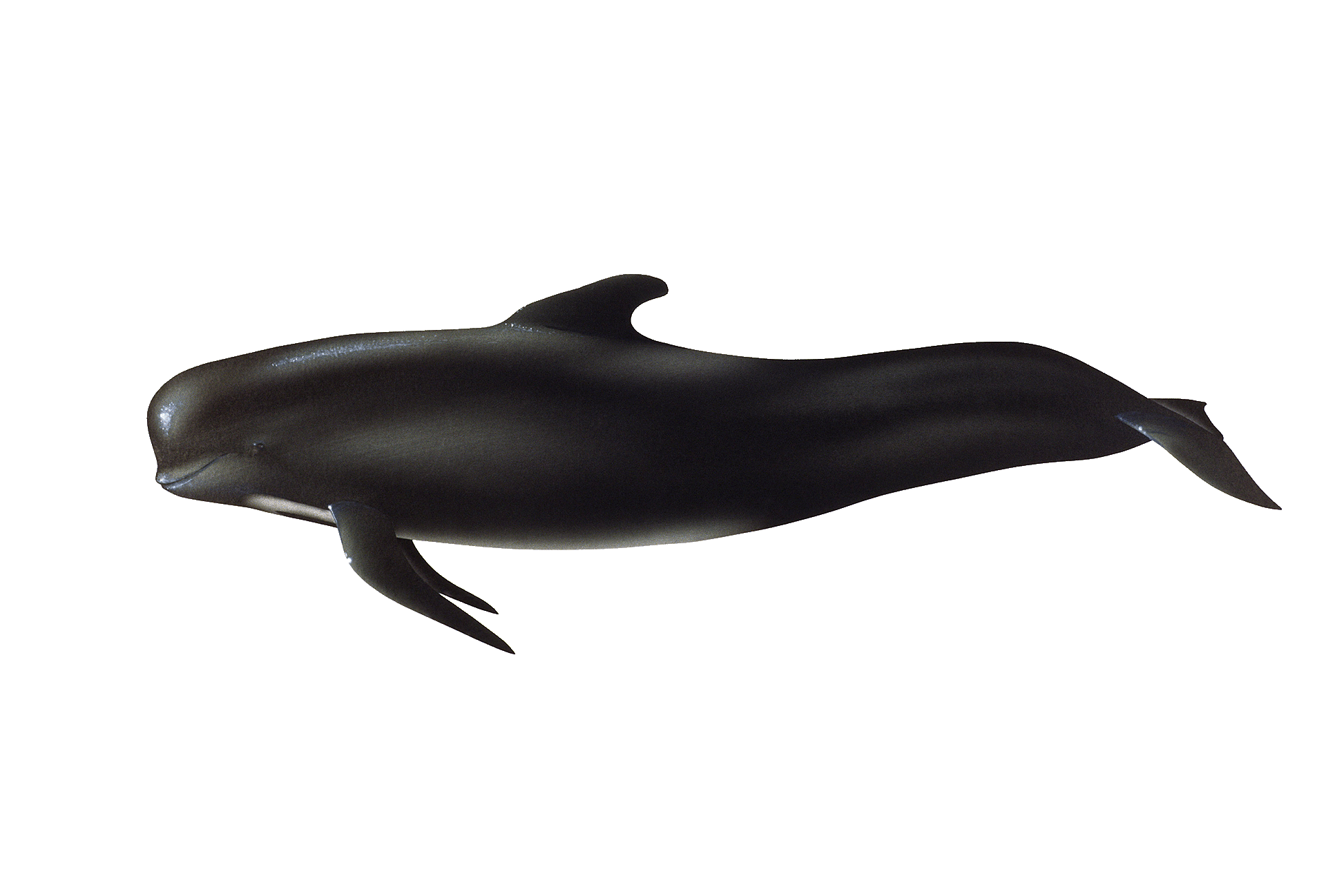
LONG-FINNED PILOT WHALE
Scientific Name: Globicephala melas (Traill, 1809)
Length: 5-7 m
Weight: 2-3 t. Newborns weigh 80kg
Average lifespan: males about 60 years; females 80
Diving depth: 600m
The head of this cetacean is large, with a prominent forehead and a barely noticeable rostrum. In the Mediterranean sea, births are more frequent in the summer. Pilot whales feed almost exclusively on squids, which they often catch at over 500 m depth. In the north-western Mediterranean, the population is estimated between 2,000 and 10,000. According to the IUCN Red List classification, the species in the Inner Mediterranean is Endangered.
RISSO’S DOLPHIN
Scientific Name: Grampus griseus (G. Cuvier, 1812)
Length: 2.5-4 m
Weight: 250-400 kg
Average life span: around 60 years for males; 80 years for females
Diving depth: 600m for about 5-7 min
Newborn Rosso’s dolphins are light grey in colour and darken as they grows; during life, more and more white scars appear, the result of love skirmishes and other social activities, so that older individuals are almost white.
The population in the north-western Mediterranean is estimated to be 16,000 individuals, which mainly frequent waters from 600 to 1,000 m depth. This marine mammal is found especially on the continental slope and submarine canyons where it feeds on fish and cephalopods. It is a particularly sociable species and lives in small groups, occasionally also seen with pilot whales and striped dolphins.
The current IUCN Red Listing for the Mediterranean subpopulation is Endangered.
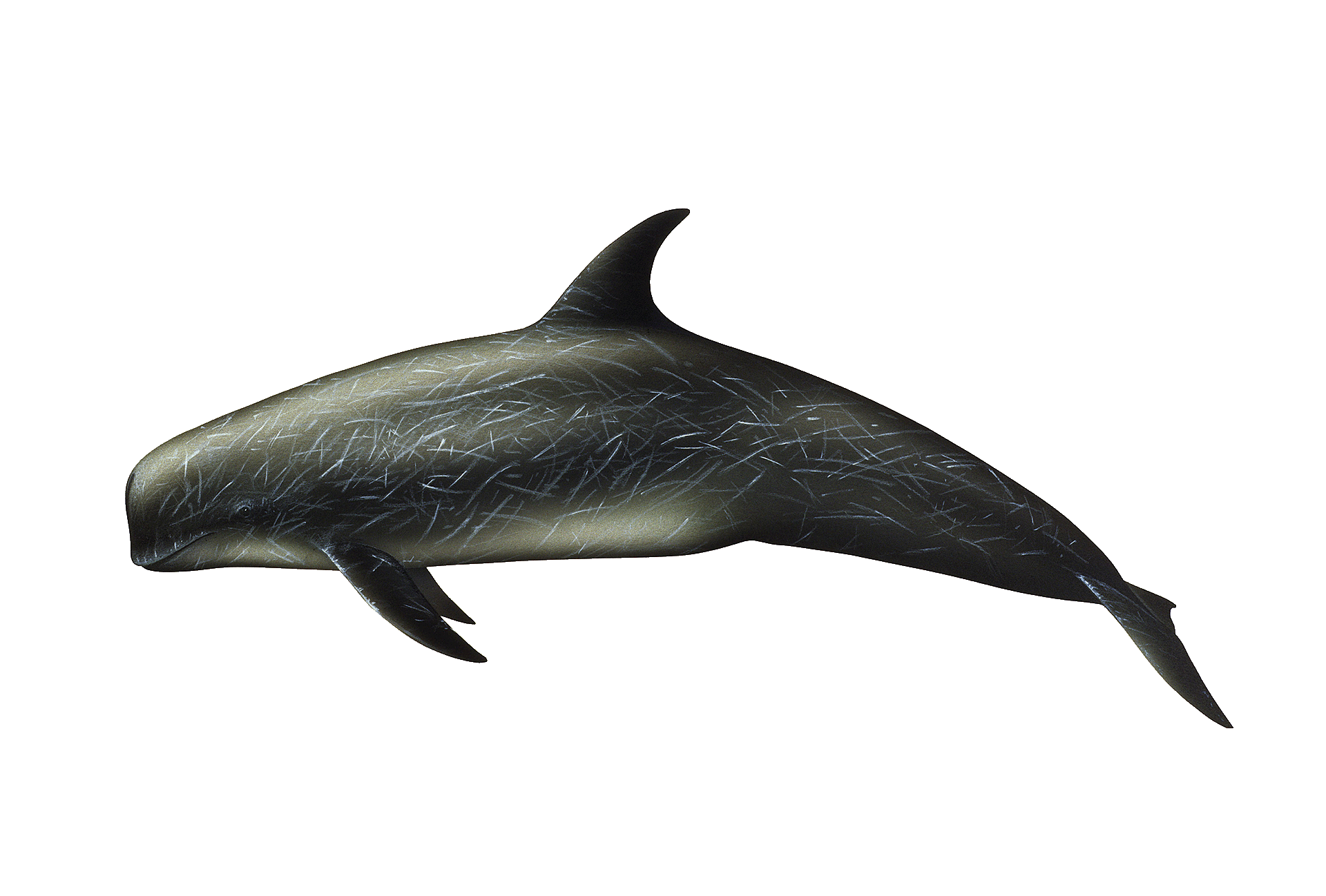

BOTTLENOSE DOLPHIN
Scientific Name: Tursiops truncatus (Montagu, 1821)
Length: 3.5m
Weight: 300 kg
Average lifespan: 40/50 years
Dive time: about 5 min
Groups of Bottlenose dolphins are easily observed, usually comprising less than a dozen individuals, but can number up to 50. The habitat of this marine mammal in the Sanctuary is mainly over the continental shelf, in waters shallower than 100 m. This habitat preference strongly exposes the Bottlenose dolphin to all sort of human activities and pressures. Its diet includes fish, shrimps, cuttlefish, and squids. According to the IUCN Red list classification, the species in the Mediterranean is listed as of Least Concern.
COMMON DOLPHIN
Scientific Name: Delphinus delphis (Linneaus, 1758)
Length: 1.5-2m.
Weight: 100 kg
Average lifespan: 25/30 years
Diving depth: about 70m for 5 min. It Can reach 300m
The Common dolphin usually frequents coastlines and shallow waters. In the Sanctuary, the rare times it is sighted, it’s seen together with Striped dolphins. In the Mediterranean Sea the Common dolphin once was frequent, but nowadays is quite rare. The species is more abundant in the Alborán Sea and in the central-south and eastern Mediterranean. According to the IUCN Red List classification, the species is Endangered, and the population is decreasing.
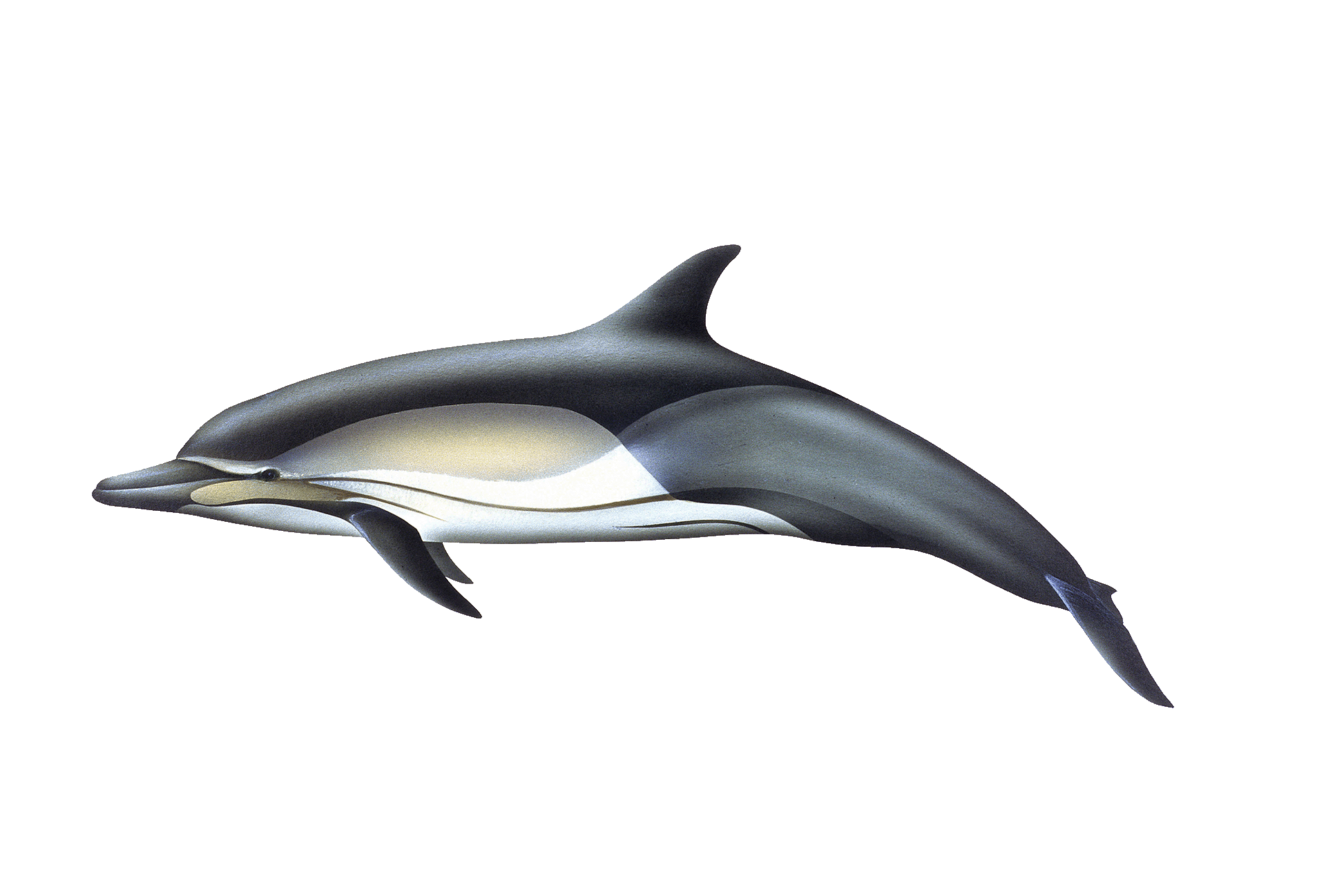
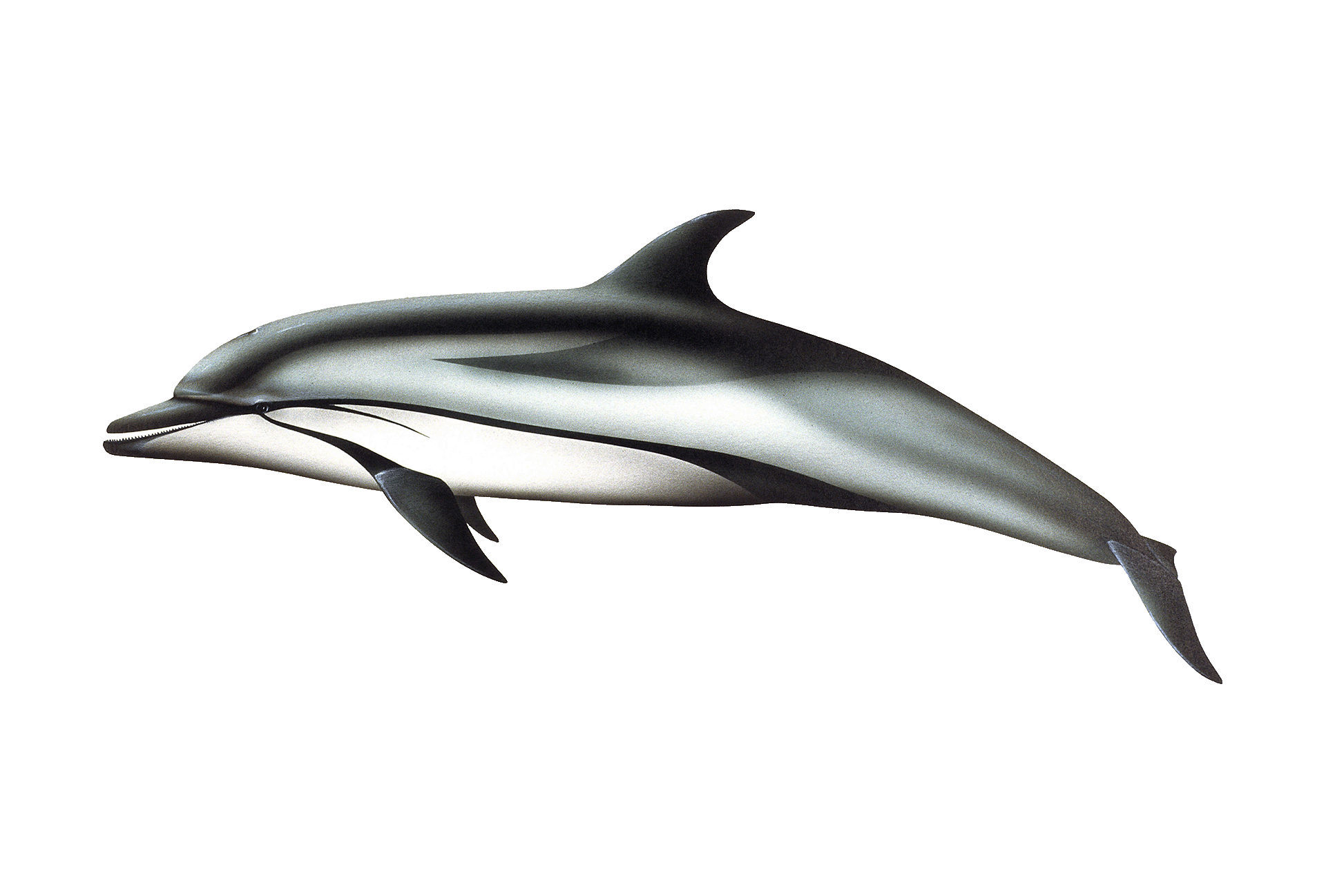
STRIPED DOLPHIN
Scientific Name: Stenella coeruleoalba (Meyen, 1833)
Length: 1.7-2.2m.
Weight: 100 kg
Average life span: approx. 25/30 years
Dive depth: about 700 m
Beyond the coastal area, the Stiped dolphin is the most widespread species in the Sanctuary. The estimated population for the Pelagos Sanctuary is around 38,000 specimens. Very sociable, it is often encountered in schools of a few dozen (as many as 100!). Curious, playful and acrobatic, these dolphins are often seen bowriding. The diet of the Striped dolphin varies according to location and season, and this may explain its successful spread. In the Ligurian Sea it feeds mainly on fish (sardines and anchovies). Sightings are frequent off the coast, at any time of year. According to the IUCN Red List classification, the species in the Mediterranean is classified as of Least Concern.
MONK SEAL
Common name: Mediterranean monk seal
Scientific name: Monachus monachus (Hermann, 1779)
Length: 2.5 m
Weight: average 300 kg
Average life span: approx. 25/30 years
The current largest subpopulation of Mediterranean monk seals has a distribution range that is mainly concentrated in the coastal areas of Greece, Turkey and Cyprus.
The monk seal is occasionally sighted in some areas of the Pelagos Sanctuary and its presence has been confirmed through non-invasive monitoring techniques (video monitoring in caves and environmental DNA).
At present, loss and degradation of critical habitat (i.e., haul-out beaches and caves), direct or indirect interaction with fisheries, represent the main threats to the species. According to the IUCN Redlist classification, the Mediterranean monk seal is listed as Vulnerable.
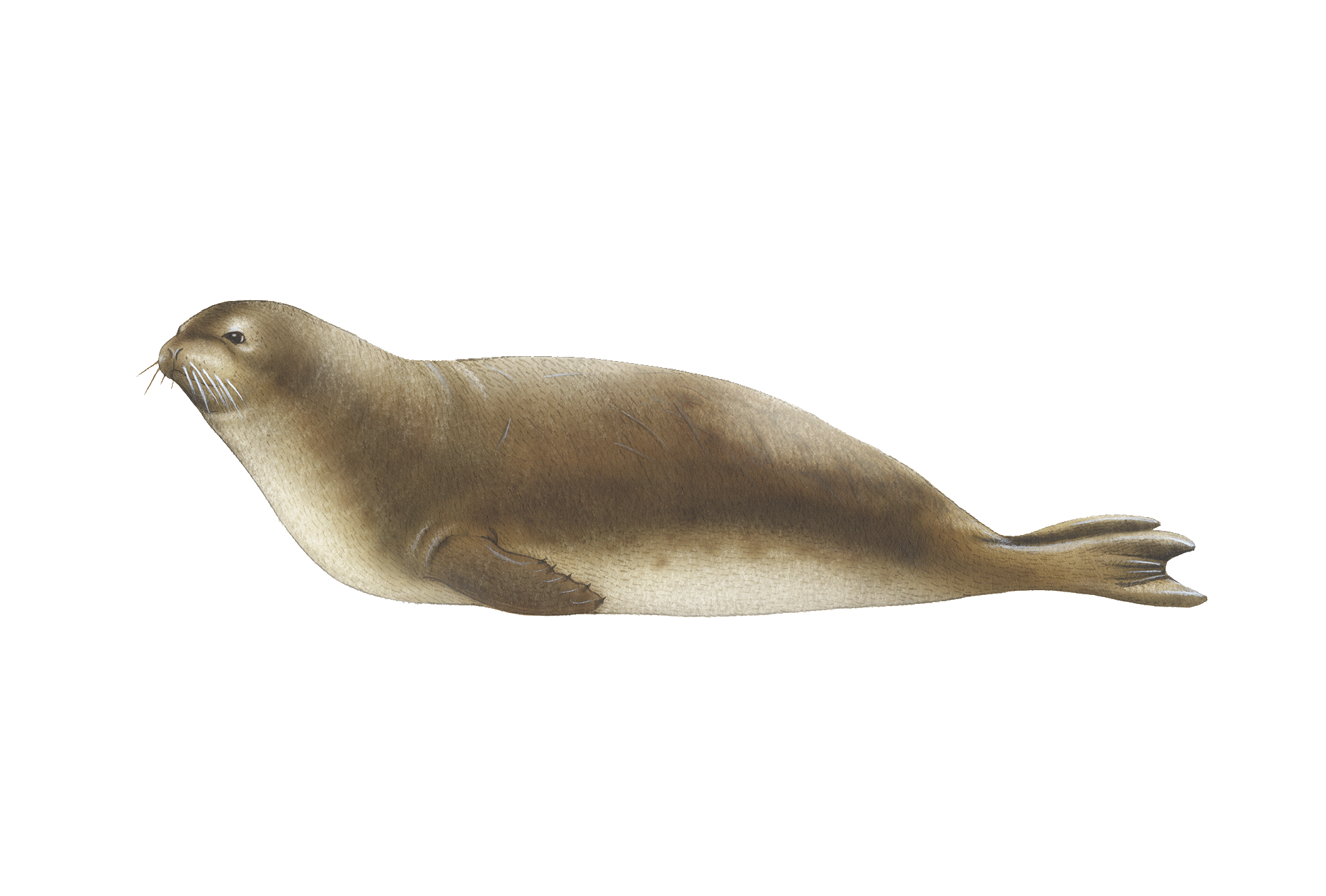
Photos credits :
© Julie Jourdan – MIRACETI
© Maurizio Würtz – Coll. Institut océanographique, Fondation Albert Ier, Prince de Monaco
© M. Würtz -Artescienza
Audio credits:
@CIBRA Centro di Bioacustica, DSTA – Università di Pavia
@Fondazione CIMA
@Stazione Zoologica Anton Dohrn
@Progetto PRIN DIVES “Deep-sea Investigation with a View to protect Elusive cetacean Species


